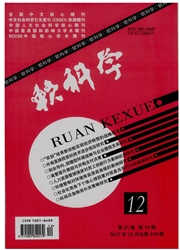

 中文摘要:
中文摘要:
采用投资者在新浪网上生成的观点投票数据计算投资者情绪(看涨情绪、看跌情绪和总体情绪),以上证180指数包含的股票为研究对象,对投资者情绪与中国股市之间的相互影响关系进行实证研究。结果发现:看涨情绪、看跌情绪和成交量均为平稳时间序列,看跌情绪比看涨情绪对投资者的影响更大,成交量是投资者看涨情绪和看跌情绪的格兰杰原因;投资者总体情绪、投资者关注度、开盘指数和收盘指数均为非平稳时间序列,投资者总体情绪与开盘指数无显著相关性,与投资者关注度和收盘指数均互为格兰杰原因。
 英文摘要:
英文摘要:
This study adopts the opinion poll of investors in Sina's financial column to estimate investors'sentiment (bullish sentiment, bearish sentiment and aggregate sentiment) and investigates the relationships between the investor sentiment and Chinese stock market. The result shows that bullish sentiment, bearish sentiment and trading volume are stationary time se- ties, and that bearish sentiment has a greater effect on the investor than bullish sentiment. Trading volume is the Granger cause of bullish and bearish sentiment. The investors'aggregate sentiment, attention degree, and Shanghai Stock Exchange 180 opening and closing indexes are not stationary time series. Aggregate sentiment is not significantly related to opening in- dex, while aggregate sentiment and attention degree/closing index are Granger causes of each other.
 同期刊论文项目
同期刊论文项目
 同项目期刊论文
同项目期刊论文
 The structure of customer satisfaction with cruise line services: An empirical investigation based o
The structure of customer satisfaction with cruise line services: An empirical investigation based o Factors influencing Chinese authors’ perceptions of journal quality: A comparison between two academ
Factors influencing Chinese authors’ perceptions of journal quality: A comparison between two academ Refining the relationship between attribute performance and customer satisfaction in the Chinese hos
Refining the relationship between attribute performance and customer satisfaction in the Chinese hos Positive and Negative Word of Mouth about Restaurants: Exploring the Asymmetric Impact of the Perfor
Positive and Negative Word of Mouth about Restaurants: Exploring the Asymmetric Impact of the Perfor Positive and negative word-of-mouth about restaurants: Exploring the asymmetric impact of the perfor
Positive and negative word-of-mouth about restaurants: Exploring the asymmetric impact of the perfor The impact of submission experiences on perceptions of journal quality and editorial support: The vi
The impact of submission experiences on perceptions of journal quality and editorial support: The vi 期刊信息
期刊信息
